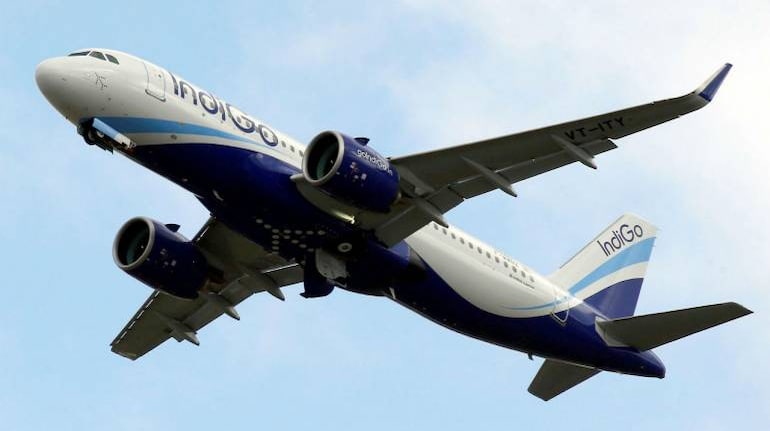



IndiGo, India's top airline, reported a loss in the first quarter of this fiscal, hit by high fuel prices and adverse foreign currency movement.
Yet, Ronojoy Dutta, its outgoing CEO, was ecstatic as he said it was the best-ever quarter for the airline.
Sure, IndiGo had racked up a loss, but it had also posted the highest quarterly revenue in 16 years. Besides, its domestic flight count and passenger carrying capacity (by available seat kilometres, or ASK) was at their highest.
IndiGo was not alone to report “highest capacity ever”. The Tata group's Vistara, too, had its highest capacity deployed in Q1-FY23. But in the case of IndiGo, it was the highest any airline in India has ever reached both in terms of capacity by ASK as well as flights.
Had it not been for the pandemic, IndiGo may have reached this mark on both fronts a few quarters earlier.
Emerging out of the pandemic, IndiGo bettered its own record as it operated 133,582 departures in Q1-FY23, about 7.04 percent more than its last best of 124,798 departures in Q3-FY20.
The airline carried 183,16,627 domestic passengers in Q1-FY23, which is a phenomenal 56.3 percent of the total market.
How other airlines stack up
The Q1-FY23 brought good tidings for other carriers too.
While IndiGo and Vistara reached their all-time highs, the embattled SpiceJet and AirAsia saw their best quarters post-pandemic.
SpiceJet operated just 55.8 percent of its pre-pandemic departures at 27,306 flights as compared to 48,885 in the October-December quarter of 2019, the last full quarter before the pandemic. AirAsia India, too, operated just 79.7 per cent of pre-pandemic flights.
The surprise was from Air India and Go FIRST. Air India, which battled aircraft issues after the Tata group takeover, lost on the lucrative peak summer season as it operated fewer flights in Q1-FY23 compared to the preceding Q4-FY22. However, it saw an increase in the number of passengers in the latest reporting quarter.
Go FIRST, on the other hand, operated more flights in the October-December quarter than the April-June quarter. The airline is still 12 percent short of its pre-pandemic domestic departures.
With IndiGo also clocking losses even after raking the highest ever revenue, the performance of all others is probably an indication of conserving cash. With Vistara and Air India deploying nearly the same number of flights, the difference was the load factor as Vistara managed to attract more travellers. This was with little revenue gain since the fare caps were in place all this while.
Spreading the wings
When IndiGo placed its massive order, the question always was where and how will IndiGo deploy as many aircraft. As it nears the 300 aircraft mark, the answer is partially answered. The airline has increased its spread by reaching out to Tier II and III cities and bidding for flights under RCS-UDAN, which will give it exclusivity for a certain period.
IndiGo operates to 74 destinations in India, ten of which are monopoly destinations. It has been expanding significantly during the pandemic. The airline which went into lockdown with 63 domestic destinations has added 11 to the tally in the last two years.
All of this at a time when air traffic has been below the pre-Covid levels.
The airline has 739 city pairs connected in September, shows data from OAG Aviation. A staggering 56 percent of these, or 420 routes, are monopoly. While all are not daily flights, 274 out of these are daily flights where there is no competition. Not all of these began as monopoly routes with some becoming so after other airlines vacated the space.
When others are shrinking, how is IndiGo growing?
The market share is a function of capacity. IndiGo has remained stagnant in terms of its fleet with a focus on fleet renewal. Vistara has managed to increase its fleet while everybody else has either remained stagnant or shrunk. In the case of Go FIRST, the groundings have led to the unavailability of aircraft.

IndiGo’s growth has been driven by two things, first deployment of capacity and utilisation of aircraft, which is totally in its control after the government removed the capacity cap. The second is deployment by competition, which is beyond IndiGo’s control. However, the competition, due to lack of funds, has not been able to add capacity.
Impact of utilisation or lack of it
There are certain fixed costs for each airline, irrespective of utilisation or not. But what happens with an increase in utilisation is that the costs are divided over more flights. This is exactly the reason why the CASK (Cost per Available Seat Kilometre) was very high in Q1-FY22 when flying was at a minimum versus Q1-FY23 when flying was at its highest. Higher utilisation helps reduce costs per seat with a better shot at profitability.
On the other hand, airlines not fully utilising their fleet have an exact opposite experience. They go away from profitability with each passing grounding. In a high-cost environment like now, this hits hard.
The tail note
IndiGo reported massive losses over the last two years. There has always been one argument on why the airline expanded so much. Could it have lowered the losses had it not expanded as much?
It could well have recorded more losses since its unit cost could have gone higher. But the higher utilisation at least gave it a shot at better revenue, and in this case, the best revenue ever.
Discover the latest Business News, Sensex, and Nifty updates. Obtain Personal Finance insights, tax queries, and expert opinions on Moneycontrol or download the Moneycontrol App to stay updated!
Find the best of Al News in one place, specially curated for you every weekend.
Stay on top of the latest tech trends and biggest startup news.